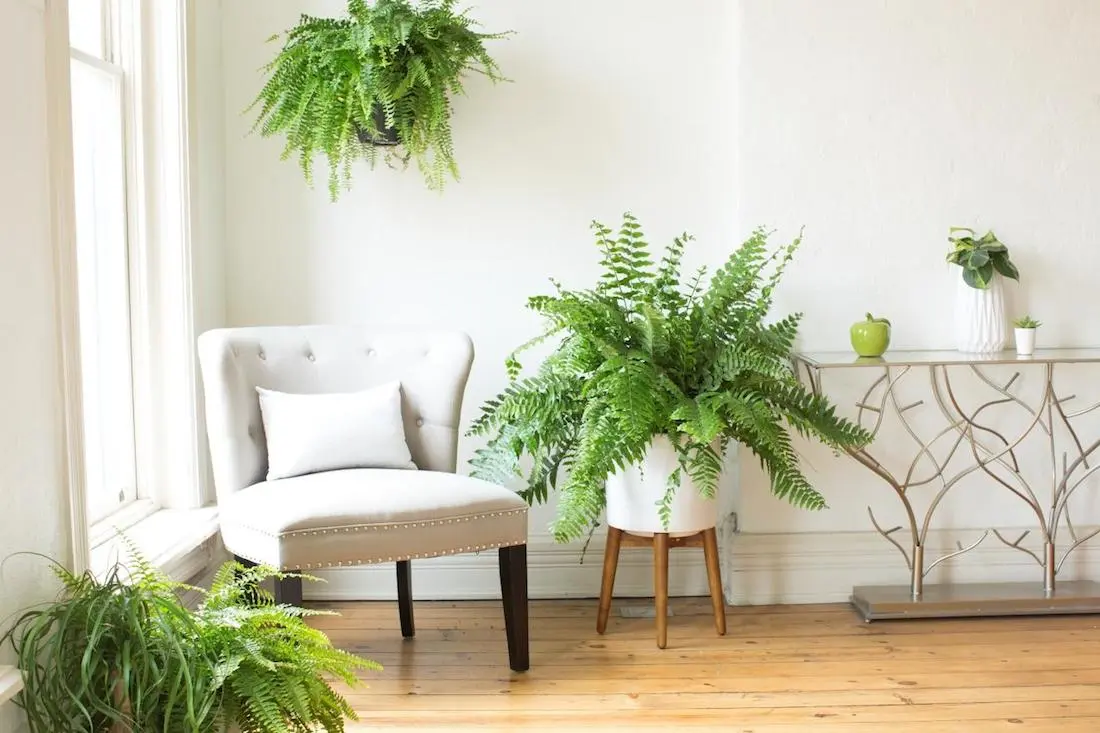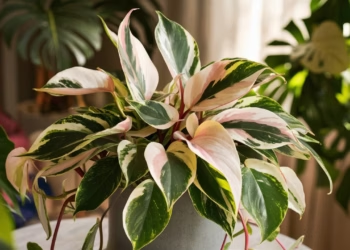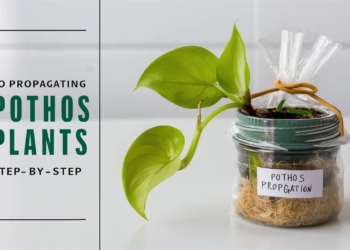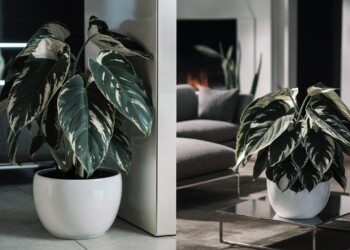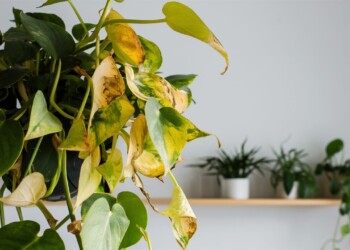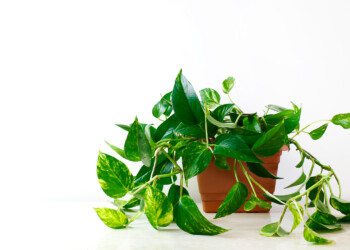Are you ready to bring a touch of vibrant greenery into your indoor spaces? Indoor ferns are the perfect choice! These luscious beauties not only add a refreshing aesthetic to your home or office but also purify the air and promote a sense of tranquility. However, caring for indoor ferns requires a bit of finesse. Fear not! In this comprehensive guide on indoor fern care , we’ll delve into the secrets of nurturing these delicate yet resilient plants, ensuring they flourish under your care!
Table Of Contents
Unveiling the Allure of Indoor Ferns
Embracing Pteridomania: A Historical Perspective
Our fascination with indoor ferns, often termed as Pteridomania, traces back to the Victorian era, where these verdant wonders adorned the parlors of the elite. Derived from the Latin term “pterido,” meaning fern, Pteridomania encapsulated a fervent obsession with ferns, symbolizing sophistication and botanical appreciation. While the fervor may have waxed and waned through the annals of time, the enchantment of indoor ferns persists, captivating contemporary plant enthusiasts with their timeless allure.
The Green Symphony: Why Indoor Ferns Reign Supreme
Indoor ferns reign supreme as houseplants, weaving a tapestry of tranquility and vitality within interior spaces. Unlike their floral counterparts, ferns exude a sense of exoticism and wilderness, imparting a touch of natural splendor to urban dwellings. With their delicate fronds and intricate foliage, ferns emulate the lushness of tropical jungles, evoking a sense of serenity and harmony in any room they inhabit.
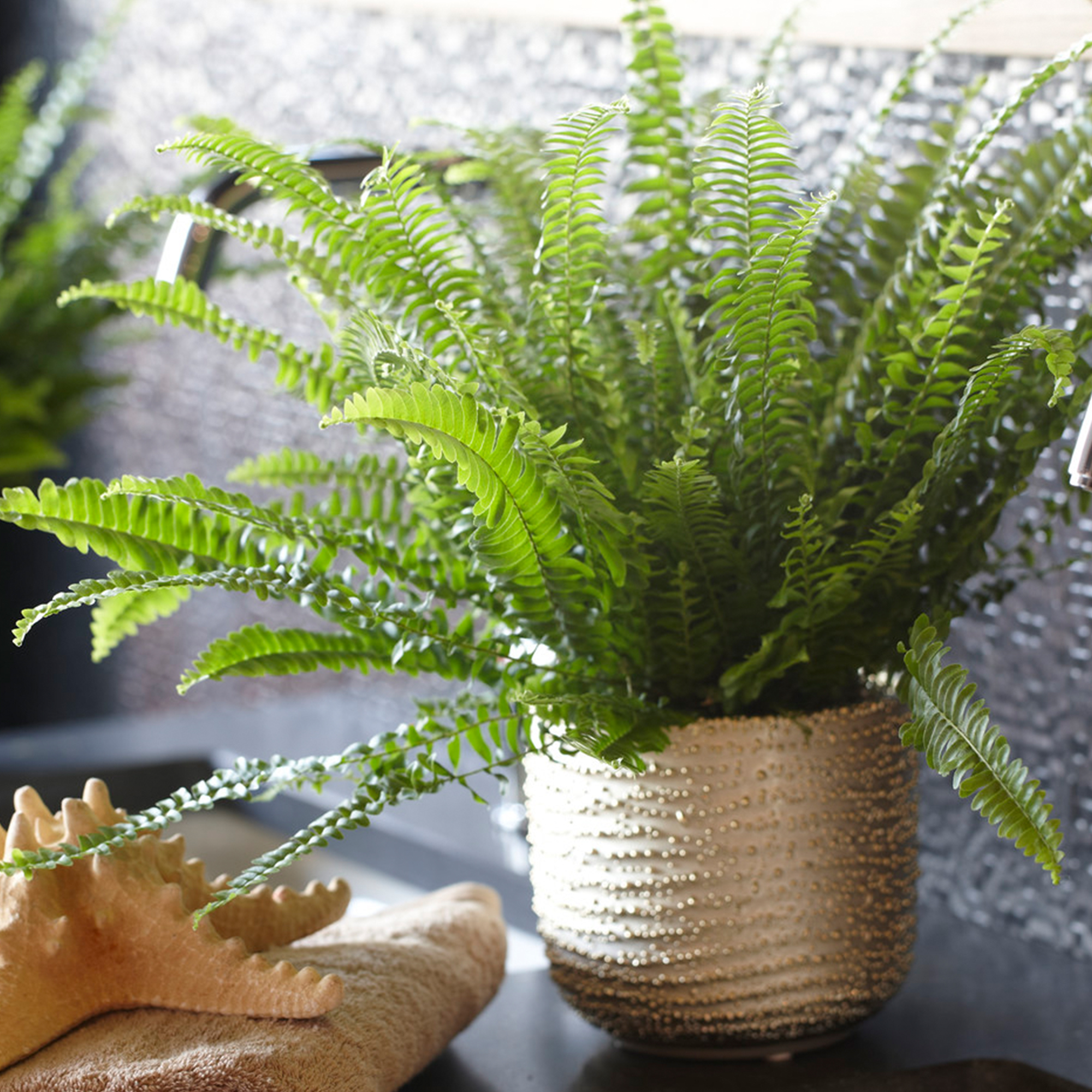
Getting Started: Choosing the Right Fern
Before diving into the nitty-gritty of indoor fern care – How To Care and Growe for Indoor Ferns (all you need to know!), it’s crucial to select the right fern species for your indoor environment. Consider the following factors:
- Light Requirements:
- Assess the light conditions in your space. Does it receive ample natural light, or is it predominantly shaded?
- Opt for fern varieties that thrive in low to medium indirect light, such as Boston ferns or Maidenhair ferns.
- Humidity Levels:
- Indoor ferns thrive in high humidity environments. If your space tends to be dry, consider investing in a humidifier or misting your ferns regularly.
- Size and Space:
- Choose fern species that suit the available space in your home or office. Some ferns, like the Bird’s Nest fern, have compact growth habits ideal for smaller areas.
- Maintenance Preferences:
- Assess your commitment to maintenance. Some fern varieties are more forgiving of neglect, while others require consistent care.
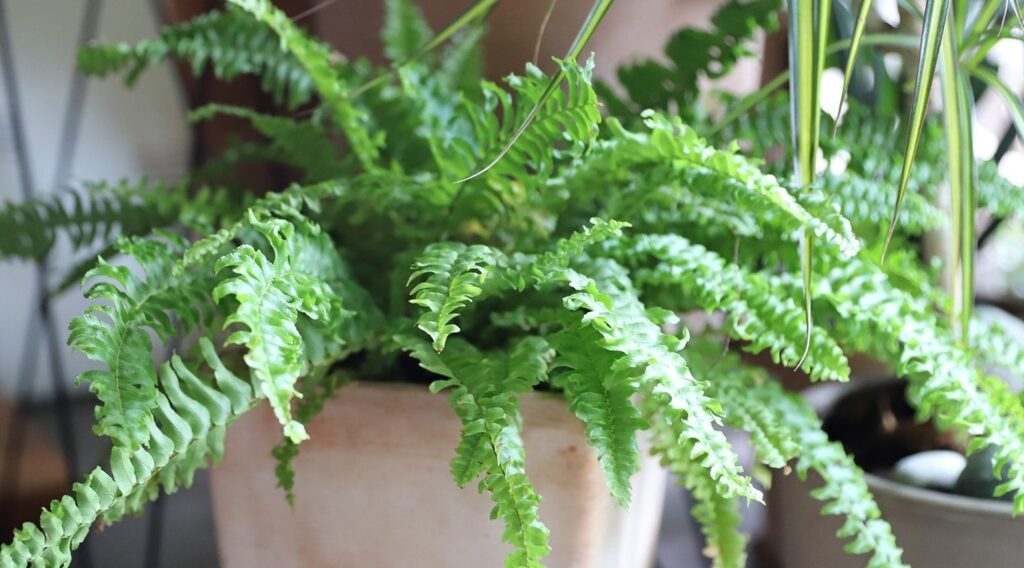
Planting and Potting
Now that you’ve selected the perfect indoor fern for your space, it’s time to get your hands dirty! Follow these steps to ensure your fern gets off to the best start:
- Choosing the Right Pot:
- Opt for a pot with drainage holes to prevent waterlogging, which can lead to root rot.
- Select a pot that allows for adequate room for root growth. Avoid pots that are too large, as excess soil can retain moisture and promote fungal growth.
- Potting Mix:
- Use a well-draining potting mix specifically formulated for ferns or create your own blend using equal parts peat moss, perlite, and coarse sand.
- Planting Technique:
- Gently remove the fern from its nursery pot, being careful not to damage the delicate roots.
- Place the fern in the center of the pot and fill in the surrounding space with potting mix, ensuring the crown of the plant is level with the soil surface.
- Watering Routine:
- Keep the soil consistently moist but not waterlogged. Water thoroughly when the top inch of soil feels dry to the touch, allowing excess water to drain freely from the pot.
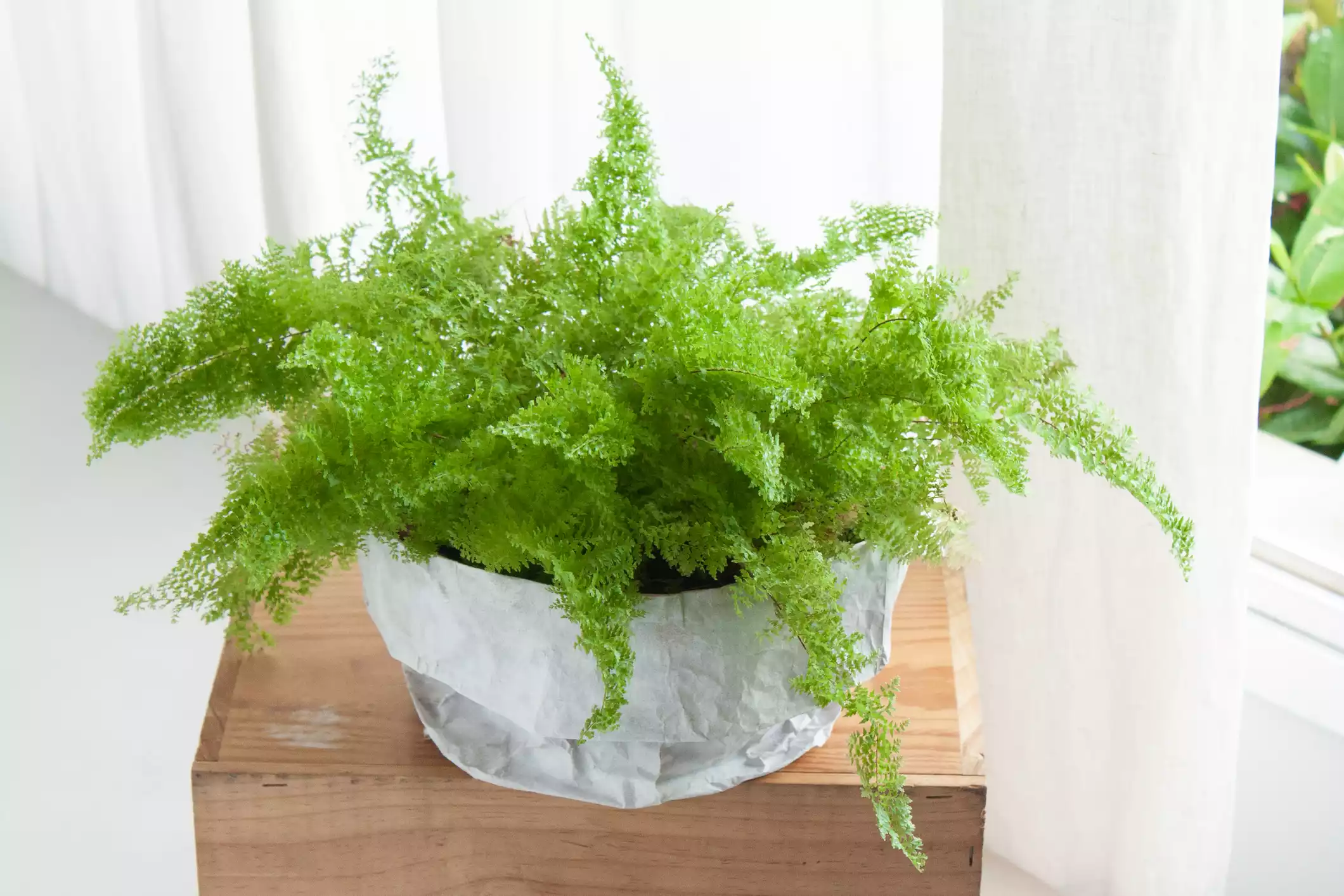
Indoor Fern Care: Maintenance Tips
Congratulations on potting your indoor fern! Now let’s delve into the essential maintenance practices to keep your fern thriving:
Light Exposure
While ferns in their natural habitat thrive in the sheltered shade of forest canopies, their indoor counterparts demand a delicate balance of light and shade. Optimal growth ensues in environments bathed in dappled sunlight, where the foliage can bask in gentle rays without succumbing to scorching intensity.
- Position your indoor ferns near east-facing windows or shield them from direct sunlight with sheer curtains, ensuring a harmonious equilibrium conducive to lush frond development.
- Rotate the plant periodically to ensure even growth and prevent one-sided leaning.
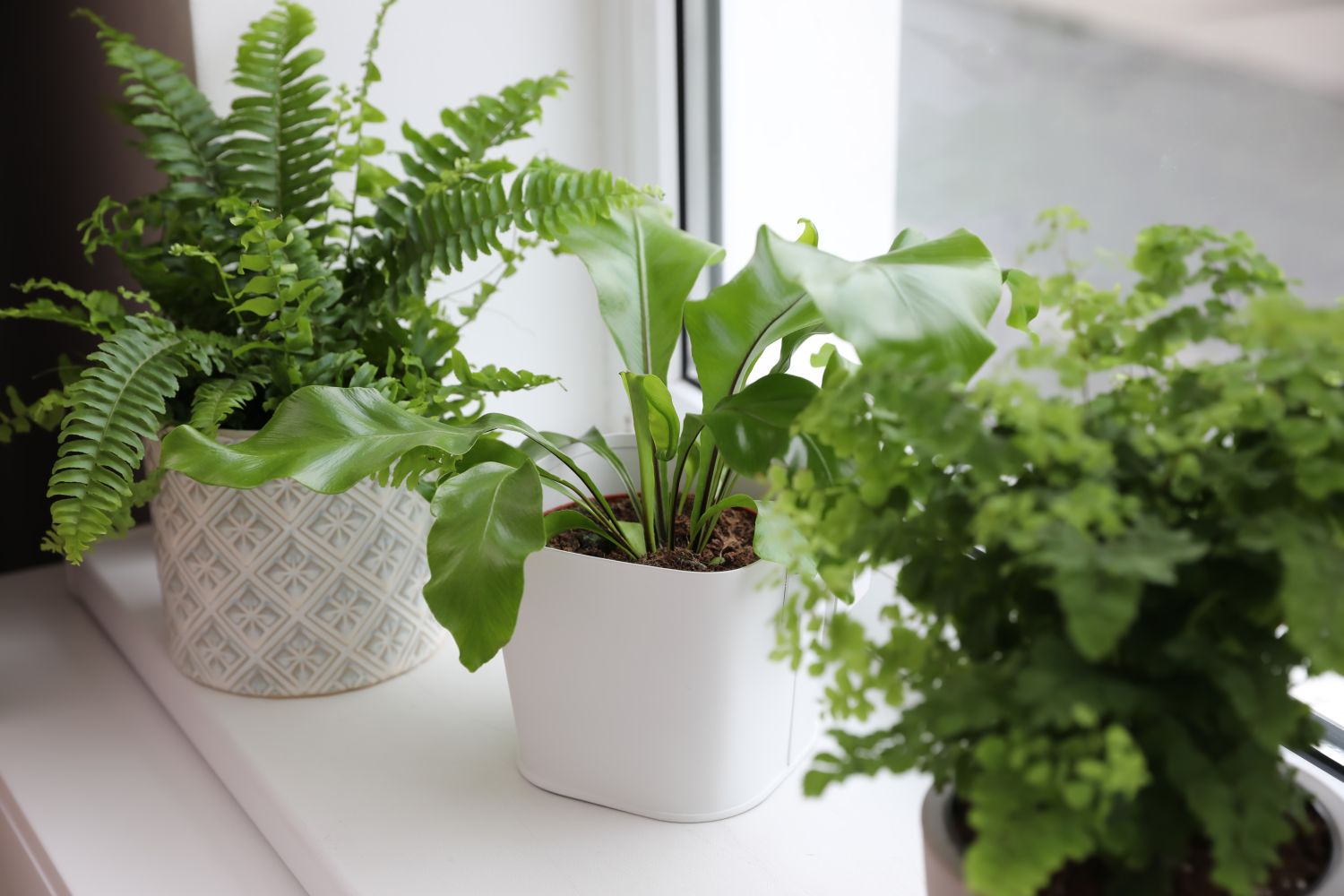
Watering Wisdom for Ferns
A judicious approach to watering is paramount in fostering the flourishing of indoor ferns. While these botanical beauties revel in moist soil, they recoil from waterlogged conditions that spell doom for delicate roots. Maintain a vigilant eye on soil moisture, watering when the surface feels dry to the touch. Strike a delicate balance, steering clear of both parched earth and sodden substrates, to nurture thriving ferns brimming with vitality and verdant splendor.
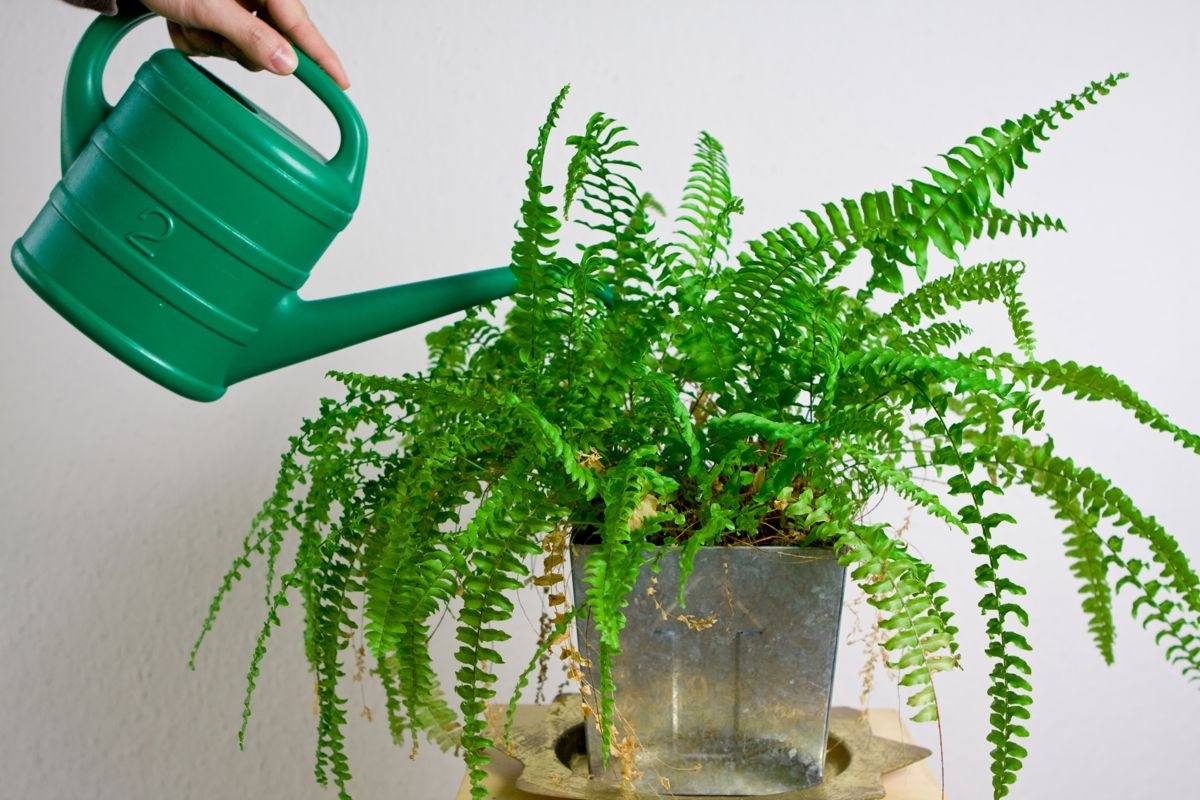
Humidity Control
Maintain high humidity levels by misting your fern regularly with room temperature water or placing a pebble tray filled with water beneath the pot. Uphold moderate humidity levels ranging from 30-50%, employing humidifiers or humidity trays to offset the aridity of indoor settings.
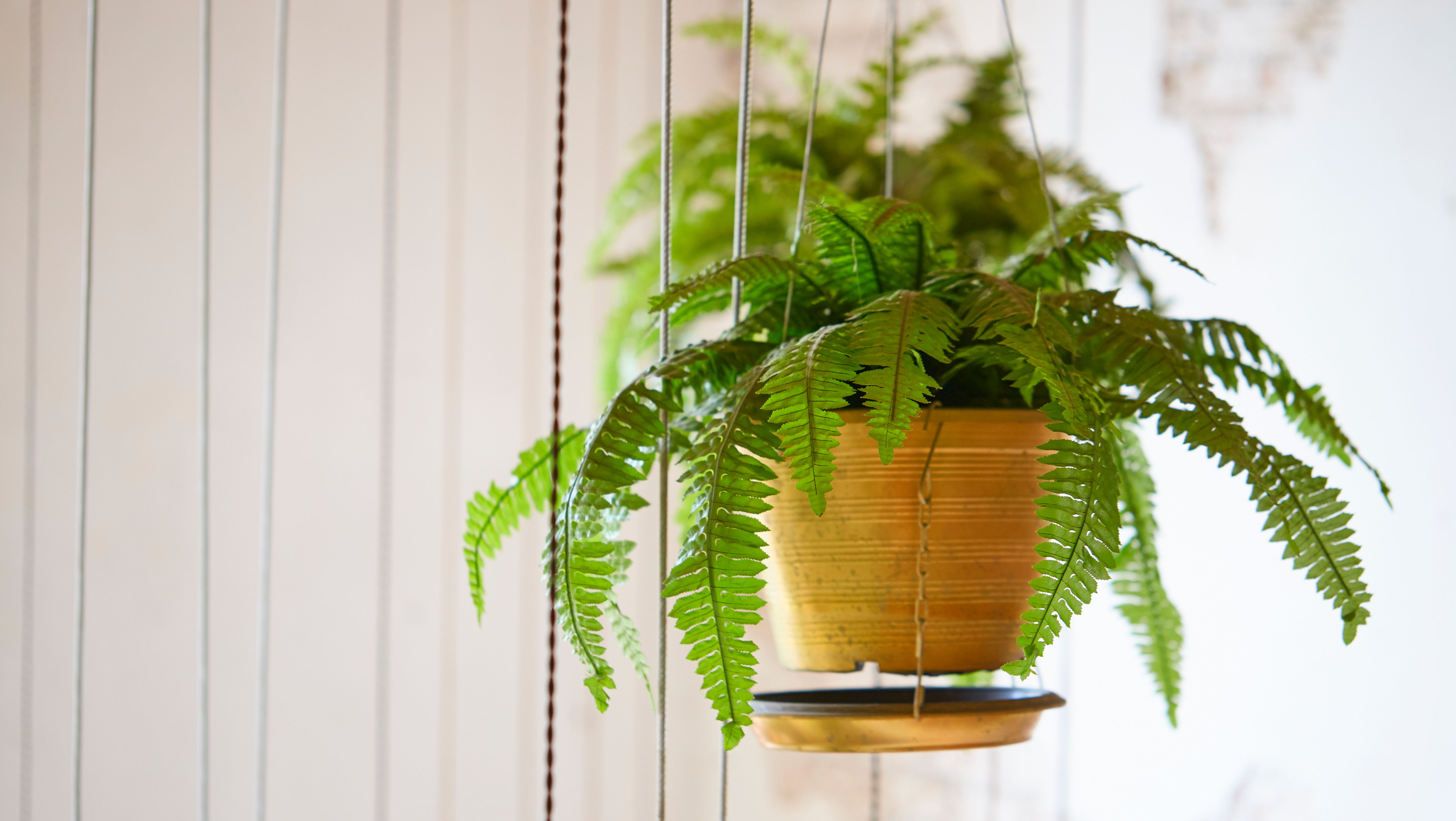
Temperature Regulation
Keep your indoor fern away from drafts, air conditioning vents, or heaters, as extreme temperature fluctuations can stress the plant. Maintain daytime temperatures between 65-75°F (18.3-24°C), with nocturnal respite in cooler climes.

Soil Selection: The Foundation of Fern Vitality
The cornerstone of fern vitality lies in the selection of well-draining, nutrient-rich soil conducive to robust root development. Mimicking the humic embrace of forest floors, ferns thrive in composts enriched with peat or fibrous substitutes, suffused with sand for optimal aeration. Ensure adequate moisture retention without compromising drainage, striking a delicate equilibrium essential for sustained fern vigor and vitality. Here some fertilization tips:
- Feed your indoor fern with a balanced liquid fertilizer diluted to half strength once a month during the growing season (spring and summer).
- Avoid over-fertilizing, as excessive nutrients can lead to salt buildup in the soil, causing root damage.
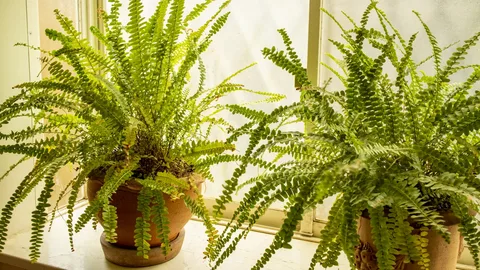
Pruning and Grooming
- Trim away any brown or yellowing fronds using clean, sharp scissors to maintain the plant’s aesthetic appeal and encourage new growth.
- Remove any dead or decaying foliage promptly to prevent the spread of disease.
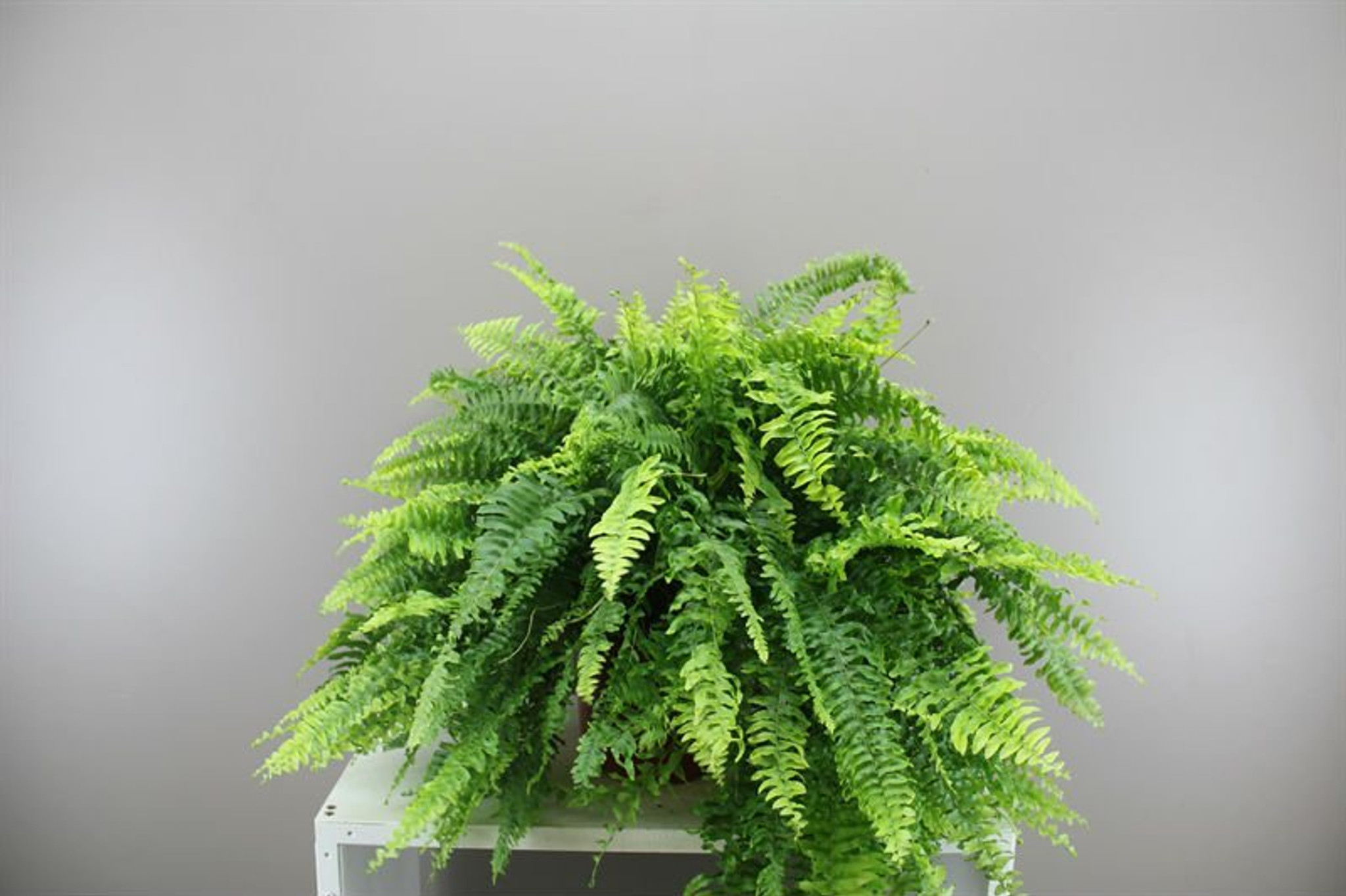
By now, you’re equipped with all the knowledge you need to become a pro at indoor fern care. Remember, while ferns may seem delicate, they’re surprisingly resilient with the right care and attention. So go ahead, add a splash of greenery to your indoor oasis and watch as your ferns thrive and flourish, bringing beauty and serenity to your surroundings! Happy gardening!
FAQs
How do you keep ferns alive indoors?
To keep ferns alive indoors, provide them with indirect sunlight, consistent moisture, and high humidity. Use well-draining soil, water when the top inch of soil feels dry, and avoid exposing them to drafts or direct heat sources. Regularly misting their leaves or using a humidifier can also help replicate their preferred growing conditions.
How often do you water indoor ferns?
Indoor ferns typically require frequent watering to maintain consistently moist but not waterlogged soil. Water your ferns when the top inch of soil feels slightly dry to the touch. This might mean watering them every few days or whenever the soil begins to dry out, depending on factors like humidity levels, temperature, and the specific needs of the fern species.
Do indoor ferns need sunlight?
Indoor ferns do need light to thrive, but they prefer indirect or filtered sunlight rather than direct sun exposure. Place your indoor ferns in a location where they can receive bright, indirect light, such as near a north or east-facing window. Direct sunlight can scorch their delicate leaves, so it’s best to avoid placing them in direct sunlight for extended periods.
Are indoor ferns hard to keep alive?
Indoor ferns can be moderately challenging to keep alive compared to some other houseplants, primarily due to their specific requirements for moisture, humidity, and light. However, with proper care and attention to their needs, such as providing adequate humidity, watering consistently, and placing them in an appropriate location with indirect sunlight, indoor ferns can thrive and make beautiful additions to your indoor space.
Why do my indoor ferns keep dying?
Indoor ferns may struggle and die due to various reasons, including over or underwatering, inadequate light, low humidity, improper soil conditions, pests, or diseases.
Will my dead ferns grow back?
If your fern has completely died, it’s unlikely to regrow from the same plant. However, if there are still healthy portions of the plant, such as green fronds or viable rhizomes, you may be able to propagate new ferns from these parts. Additionally, if the issue causing the fern’s decline is addressed, you can replace it with a healthy fern to enjoy in your indoor space.
